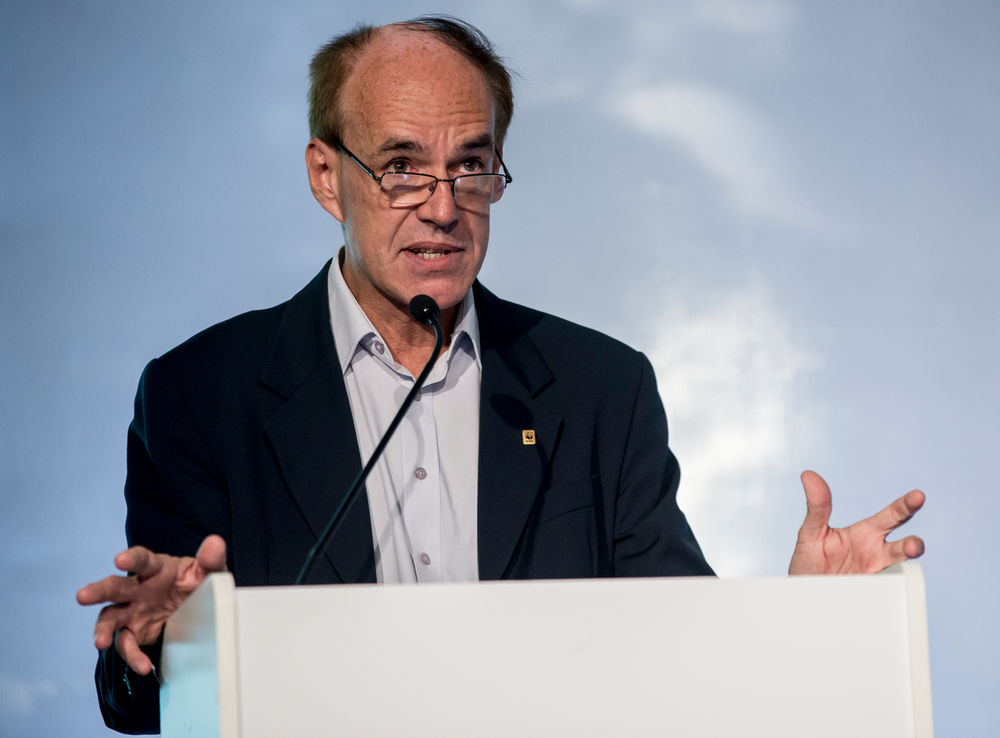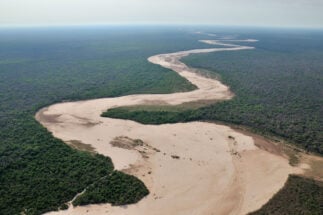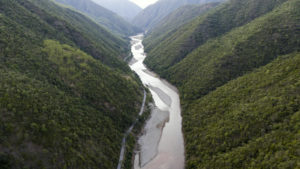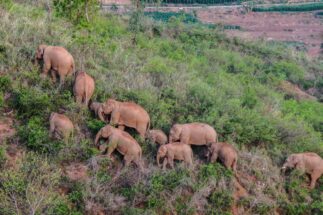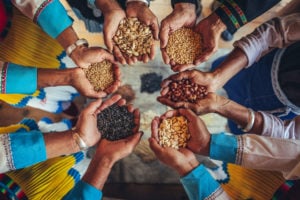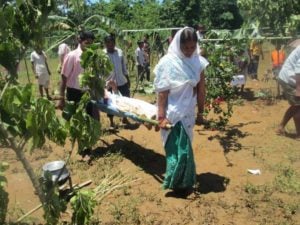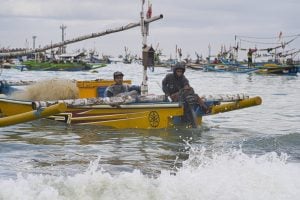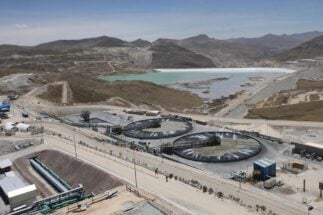The world is facing simultaneous crises in biodiversity loss and climate change, which are deeply connected and require ambitious steps forward in order to be addressed. This is especially relevant for Latin America, which has seen more significant losses in biodiversity than any other region, and is also subject to multiple extreme weather events that are expected to increase in frequency and intensity in the future.
Seeking to address these challenges, governments will gather in the next few months at the first part of the COP15 Biodiversity Conference, and at the COP26 Climate Change Conference. Initial discussions already took place at the recent United Nations General Assembly (UNGA), which included a full-day side conference on food systems.
In an exclusive interview with Diálogo Chino, the WWF’s Director General, Marco Lambertini, addressed the importance of including nature-based solutions in countries’ decarbonisation plans. The world has to be “nature positive” by 2030, a target he expects governments will include in the new global biodiversity framework to be discussed at COP15.
Diálogo Chino: At UNGA, developed countries made big climate announcements, such as China’s pledge to end public coal financing. But there’s still a long road ahead as developing countries call for further climate ambition. How can COP26 make a difference?
Marco Lambertini: We have been seeing growing commitment and action towards carbon neutrality and a net-zero future by 2050. The whole economy and society are begging to move in the right direction, but not fast enough. Several countries are acting but we need to see more. Increasing ambition is the most important thing, to get a snowballing effect with other countries. I’m hopeful COP26 will deliver significant progress, but it won’t likely be enough. A real breakthrough would be to bring onboard countries that are still lagging behind in climate action.
What are the key issues that you would like to see addressed at the upcoming COP26?
The connection between nature and climate has to take a central role. Nature-based solutions are a fundamental tool to mitigate up to 30% of global emissions. Loss of nature is exacerbating climate change, with forest fires the most obvious [sign]. We would like for nature-based solutions to be more formally embraced as part of net-zero plans for 2050.
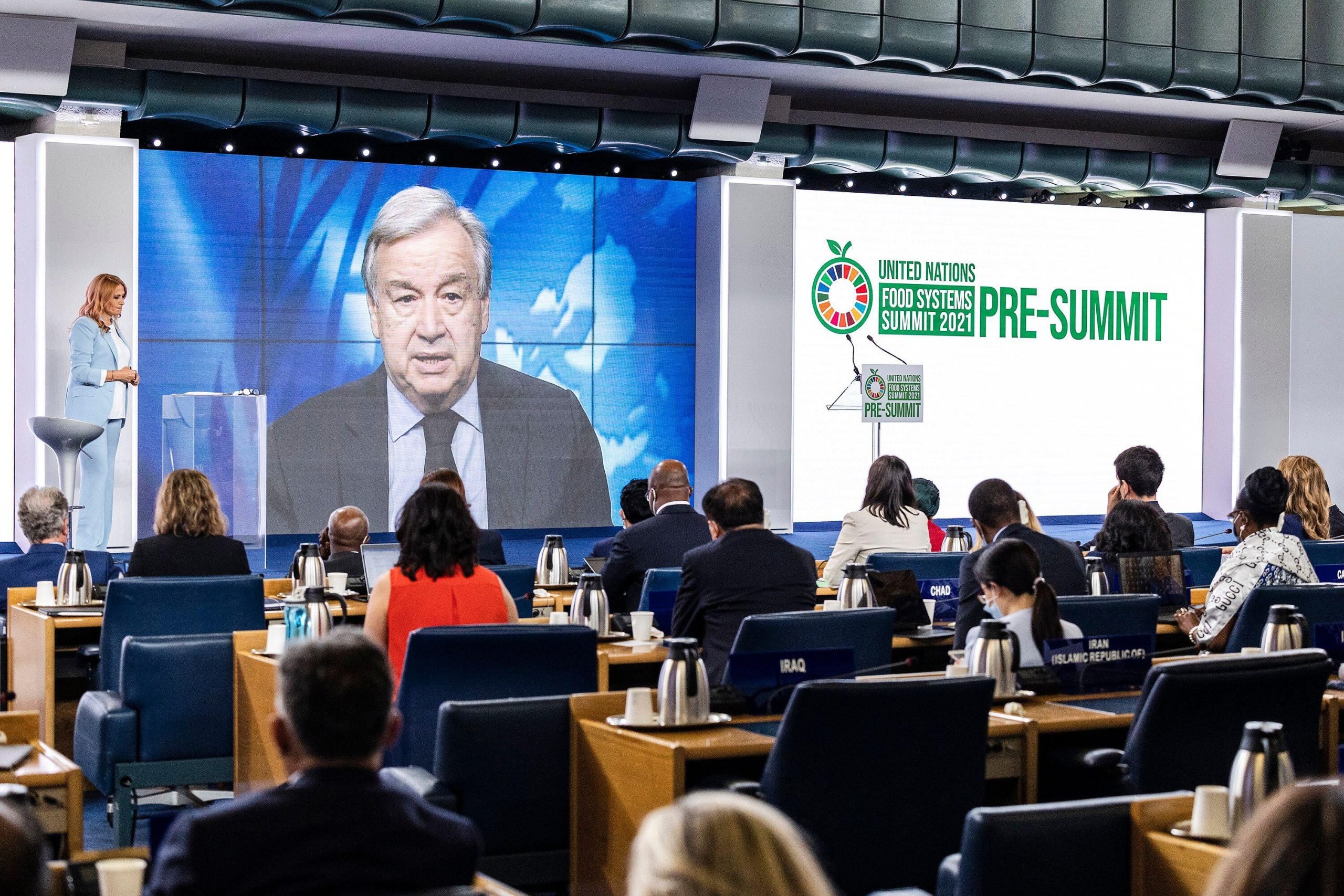
The UN also recently held the Food Systems Summit. While there’s an agreement that the global food system is broken, stakeholders are divided on how to fix it. Has the summit made a difference?
The summit brought together all the different voices around food production and consumption, so it wasn’t surprising to have dissenting views on the way forward. Still, the summit was very significant and served to open up discussions on food systems. There’s been a recognition that food systems are failing people, with big issues with hunger, inequality and access to food. They [food systems] are also failing the climate, as they are a main driver of climate change and nature loss.
The summit happened as the UN is soon to host climate and biodiversity talks. There’s an opportunity to capitalise on the output of the food summit, to inspire both UN discussions to take onboard targets and actions related to the food system. The disappointing thing is that this was a summit and not a decision-making event – not many decisions came out of it. Not many governments made a clear link between food, human health and planetary health. We have to build on this and continue the conversation, developing common targets to be pursued by governments, businesses and consumers.
This week, governments will hold the first part of the COP15 biodiversity talks, which will continue next year in China. A draft agreement has already been shared to replace the Aichi targets. What are your expectations of the upcoming negotiations?
There are some positive developments in the draft compared to the Aichi targets. There’s a willingness to define quantitative measurable targets in the new biodiversity framework, which is significant considering that the only Aichi target that was delivered on was the one that had a numeral figure attached to it [protected areas]. Quantitative targets focus attention and increase accountability. If it’s not measurable you can’t get it done. The new draft has many more quantitative targets and that’s a good development.
Still, a global goal for nature is missing, a clear destination for all these efforts we are planning to make. We have a clear destination for climate: decarbonisation by 2050. You can develop pathways and a plan based on that. We don’t have something like that on nature in the current draft, so we are suggesting a sharper global goal to be “Nature Positive by 2030” – meaning that we have to have more nature by the end of the decade [than in 2020], measured in terms of species and ecosystems. Governments have to commit to more fish, forests, pollinators and overall biodiversity. It has to be the new compass for nature.
Is there still time to introduce these modifications in the draft?
China will become the president of the CDB COP and will drive the negotiations forward. There are still several months to fix the several gaps currently on the draft, the first one being the lack of a global goal for nature. This has to be in the agreement. Then we also need more clarity on production and consumption targets. This includes targets on agroecology, regenerative agriculture, sustainable fishing [and] sustainable infrastructure, something very relevant to China with the Belt and Road Initiative (BRI). China has developed a green BRI and is taking steps in that direction. We have to green the key economic sectors that are drivers of nature loss.
We are clear about the problem and the consequences for our society – the only answer is to embark on a transition
There’s also the issue of finance. This is about the funding for direct conservation efforts, with a gap of US$80–100 billion per year [required] to support developing countries to protect 30% of their land and ocean. This has to be accompanied by redirecting all the harmful subsidies that are spent for agriculture, fisheries and forestry. This is money that has to be repurposed, as is happening now with fossil fuels subsidies going to renewable energy. We have to see the same in these other sectors to make them nature positive.
Latin American governments have called for debt-for-nature or debt-for-climate swaps amid the Covid-19 pandemic. Can this mechanism be scaled up in a region with a high level of debts and a very significant natural capital that is currently endangered?
It’s a very important tool that has to be considered. It’s one of the best times in history for countries to embrace debt-for-nature swaps. The Covid-19 crisis has increased sovereign debts everywhere, especially in developing countries. We support the idea of multiplying these schemes. There won’t be swaps enough, so it has to be carried out alongside other tools, such as the redirection of subsidies and sovereign green bonds. These can be used by governments to invest in transitions to nature-positive societies.
We are clear about the problem and know the consequences it’s causing to our economy and society. The only answer is to embark on a transition that doesn’t mean “stop developing”. It’s about growing wealth in a different way. A combination of innovation, technology and individual behavioural change could actually deliver that. That is happening on energy but we also need to see it on food, on agriculture, on fishing, and on the way we use our resources. The world has to agree on the destination and the plan to carry out that transition, not leaving anyone behind.
Latin America is a biodiversity superpower and relies on its natural capital for its economic development. But the region’s biodiversity is severely endangered, as WWF’s Living Planet Report has highlighted. How can Latin America better conserve its biodiversity while achieving a green recovery from the Covid-19 pandemic?
The economic value of biodiversity is huge. We have to rediscover and account properly for the value of biodiversity. Almost half of the workforce in the world depends on natural systems, such as [in] tourism and agriculture. We have to preserve that natural capital, which is generating so much for the economy, and restore what we can. The more we have the more it will support our economies. Doing that means stopping the loss of biodiversity by protecting more of what’s left on the planet, and avoiding forest destruction and conversion, which also means changing the way we produce food – particularly in Latin America, as this is driving deforestation.
